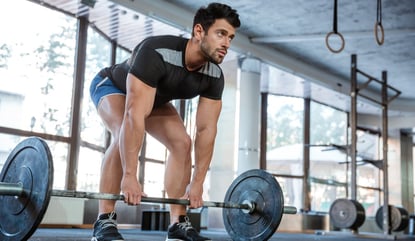How do I lift heavy weights? Deadlift vs Squat

We've talked a lot about bone density in the last few blogs. Click here to read how good strength work is if you are interested in improving your bone density.
Now, how to start?
The research suggests that what we lift needs to be quite heavy if it is going to impact our bone density.

Let me introduce two of my favourite things in the world!
The deadlift and the squat.
- Both so good for you.
- Both have so much to offer.
- Both can wreak havoc if done poorly.
- And both often get a bad wrap for achy lower backs and sore knees.
So what’s the difference between these movements?
READ: Flexibility and Mobility.. not such a 'stretch' to achieve!
Why do these big players find their way into most exercise programs at some point (especially those that want improvements in bone density?)
And how can you do them so that they are likely to bring you results and not achey joints?
Read on to find out!
Both are meant to help you lift stuff
Important to remember this fun fact!
Although there are lots of different variations of squats and deadlifts, at a basic level both of these movements are effectively designed to help you lift. Now I’m not saying you need to start deadlifting your children or backpacks! But typically when you need to help move a fridge or maneuver that heavy suitcase, chances are you will try and use a squat or deadlift (or some kind of variation) to help you do so. Most of us are going to be faced with lifting things of different shapes and sizes for most of our lives, so practicing safe lifting techniques make a lot of sense to help our bodies go the distance. Done well, both patterns allow us to lift heavy loads whilst protecting our most vulnerable joints. Now I could go total geek mode and talk about levers, moment arms and compressive forces, but hope you’ll take my word for it! If you are interested to understand more about these things then, click here or here.
Strong muscles and strong bones
Done well, these movements utilise lots of muscles. They are big bang for buck exercises and pack in many benefits if done regularly. If you want to look good, run faster, build up your bone density or cope better when you travel then these movements will assist you reach those goals.
We’ve talked a bit about bone density in recent posts, and I recently read a cool fact which helped cement strength training as king of all my exercise options. Our bone density has been shown to be positively correlated with how many TONNES we lift over a 12 month period. That’s right… TONNES. These movements allow you to lift heavy loads and will help you stay strong in both your muscles and bones in the long term. Read more here if you are interested in the research.
You need a Yoda
Sorry, been watching too much Star Wars lately and couldn’t help a Yoda shout out. In all seriousness though, these movements need a willing participant (you) and a patient, wise coach like Yoda. They take practice, persistence and good coaching. Not everyone is able to do these movements to their full range right away. Damaged joints, stiff muscles as well as poor posture are a few of the barriers we may often need to address before you can practice these movements regularly under load. Technique for both of these movements can also be tricky. A good coach will have many tricks up their sleeve to help you access these movements. You may need to be filmed, you may need to watch some videos or perform some specific drills in order for these movements to become safe and worthwhile to perform. That’s why you need your Yoda.
Are you sold yet? Hope this post has helped explain why these movements are two of my favourites.
And as Yoda said..
“Fall if you will, but try you MUST!”
Hope this post has inspired you to try.
May the force be with you :)

